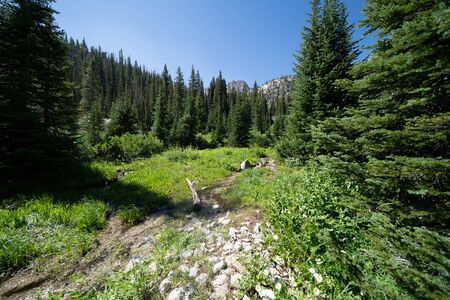Introduction to the Broads National Park
Nestled in the heart of East Anglia, the Broads National Park stretches across the counties of Norfolk and Suffolk, offering a rare and enchanting wetland landscape that is unrivalled elsewhere in the United Kingdom. This unique network of rivers, shallow lakes—locally known as broads—and sprawling reed beds forms an intricate patchwork of waterways that has shaped both the natural environment and local culture for centuries. The Broads are not only celebrated for their tranquil beauty but also hold immense ecological significance, supporting a wealth of wildlife including rare birds, plants, and aquatic species. As Britain’s largest protected wetlands, the Broads play a vital role in regional conservation efforts while providing an iconic backdrop for leisure and exploration. For locals and visitors alike, the park represents a harmonious blend of wild nature and rural tradition, making it one of Norfolk and Suffolk’s most cherished landscapes.
Best Wetland Walks in the Broads
The Norfolk and Suffolk Broads offer an exceptional array of wetland walks that immerse visitors in the region’s unique ecosystem. Whether you’re a keen rambler, a casual stroller, or a family seeking an accessible adventure, the Broads National Park has something to suit every pace. Below is a curated selection of scenic wetland walks, chosen for their accessibility, wildlife spotting potential, and proximity to local points of interest.
| Walk Name | Accessibility | Wildlife Highlights | Nearby Attractions |
|---|---|---|---|
| Hickling Broad Nature Trail | Wheelchair-accessible boardwalks; gentle gradients | Bitterns, marsh harriers, swallowtail butterflies | Hickling Broad Visitor Centre, Stubb Mill birdwatching platform |
| Ranworth Broad Boardwalk | Step-free paths; suitable for pushchairs and wheelchairs | Cormorants, kingfishers, damselflies | St Helen’s Church tower views, Ranworth Maltster pub |
| Barton Broad Boardwalk | All-weather surface; accessible toilets available | Otters, herons, dragonflies | Barton Turf village green, How Hill Nature Reserve |
| Sutton Fen Nature Reserve Trail | Narrow paths; not suitable for wheelchairs but manageable for most walkers | Cranes, reed warblers, rare orchids | Sutton Staithe tea rooms, Sutton Windmill Museum |
| Upton Marshes Circular Walk | Kissing gates; level terrain with some unpaved sections | Barn owls, water voles, sedge warblers | Upton Boat Dyke picnic spot, Upton village shop and café |
Accessibility Considerations for Walkers of All Abilities
The Broads’ commitment to inclusivity ensures that many routes feature accessible boardwalks and helpful signage. Facilities such as accessible toilets and step-free entry points are well maintained at key sites like Hickling and Barton Broads. It’s advisable to check individual site information before visiting if you have specific mobility requirements.
Top Tips for Wildlife Spotting on the Broads’ Wetland Trails
- Bring binoculars for a closer look at elusive species such as bitterns or otters.
- Mornings and late afternoons are prime times for bird activity.
- Packed lunches can be enjoyed at designated picnic spots along many trails.
- Please follow countryside codes by sticking to marked paths and keeping dogs under control to protect sensitive habitats.
Exploring Local Culture Alongside Natural Wonders
A walk in the Broads is not only about nature – it’s also a chance to discover local history and hospitality. Take time to visit charming villages such as Ranworth or Upton after your walk, where community-run cafés and traditional pubs offer a warm welcome and locally sourced fare. Whether you’re here for a brisk stroll or a leisurely day out, the Broads’ wetland walks promise both tranquillity and discovery in equal measure.
![]()
3. Riverside Paths: Connecting Communities and Nature
One of the most remarkable features of the Broads National Park is its intricate network of riverside paths, weaving through tranquil marshes and linking charming villages with historic market towns. These scenic routes are more than just walkways; they are lifelines that have connected communities for centuries, offering both locals and visitors a unique opportunity to immerse themselves in the natural beauty and vibrant culture of the Broads.
Exploring Riverside Routes
Setting out along the banks of the River Bure or Waveney, you’ll find well-marked footpaths that meander past reed beds, ancient churches, and waterside pubs. Many routes are accessible from key hubs such as Wroxham, Horning, and Beccles, where you can easily join a riverside trail. Whether you prefer a leisurely amble or a more brisk ramble, these paths cater to all abilities and interests.
Tips for Enjoying the Views
To make the most of your riverside walk, set off early in the day when morning mists hover over the water and wildlife is most active. Bring a pair of binoculars for spotting kingfishers or herons along the riverbanks, and don’t forget your camera—sunrise and sunset offer especially atmospheric light for photography. Many paths have benches thoughtfully placed at scenic viewpoints, ideal for a quiet rest while soaking up sweeping vistas across the wetlands.
Engaging with Broads Culture
The riverside paths aren’t just about stunning landscapes—they’re also gateways into local life. Pause at a village tearoom for a slice of Victoria sponge or pop into a traditional pub for locally brewed ale. Keep an eye out for community events such as summer fetes or open-air art exhibitions in market towns like Acle or Loddon. The Broads’ heritage is woven into every step: from windmills standing sentinel over marshes to friendly greetings from boaters navigating the waterways beside you.
Exploring these riverside routes offers not only physical refreshment but also a deeper connection to the enduring spirit of Norfolk and Suffolk’s wetlands. Each path invites you to slow down, engage with local traditions, and appreciate the subtle interplay between water, wildlife, and human community that defines life on the Broads.
4. Wildlife and Conservation Efforts
The Broads National Park is celebrated for its remarkable biodiversity, providing a haven for an array of species, many of which are rare or endangered in the UK. As you explore the wetland walks and riverside paths, you’re likely to encounter everything from elusive otters gliding through reed-fringed waters to the vibrant flash of kingfishers darting along the banks. The area’s unique blend of freshwater habitats, marshes, fens, and woodland supports a rich tapestry of life.
Key Species Found in the Broads
| Species | Habitat | Status |
|---|---|---|
| Bittern | Reedbeds | Endangered (UK) |
| Swallowtail Butterfly | Fenland | Rare (UK’s largest native butterfly) |
| Otter | Rivers & Wetlands | Protected |
| Marsh Harrier | Wetlands & Marshes | Recovering Population |
This mosaic of habitats is carefully managed by local conservation bodies such as the Broads Authority and Norfolk Wildlife Trust. Their ongoing work includes reed cutting, water quality monitoring, and restoring natural water flow to benefit both wildlife and visitors.
Conservation Initiatives in the Broads
-
Biodiversity Action Plans:
Support targeted measures for priority species like bitterns and swallowtail butterflies.
-
Waterway Management:
Efforts to reduce pollution and invasive species that threaten native flora and fauna.
-
Community Engagement:
Educational events, volunteer programmes, and guided walks raise awareness about the importance of wetland conservation.
The Broads’ delicate ecosystems are under constant pressure from climate change, increased tourism, and changing land use. However, through collaboration between conservationists, local communities, and visitors, there is hope for safeguarding this precious landscape for generations to come. By treading lightly on your explorations and supporting these initiatives, you contribute directly to the preservation of one of Britain’s most cherished wild spaces.
5. Essential Tips for Walking the Broads
Exploring the Broads National Park on foot is a truly immersive way to experience its tranquil wetlands and riverside landscapes. To ensure your walk is both enjoyable and respectful of this unique environment, keep the following practical advice in mind.
Local Etiquette
The Broads are beloved by locals and visitors alike, so it’s important to walk considerately. Stick to marked footpaths, as many routes cross private land or sensitive habitats. Greet fellow walkers with a friendly nod or “hello”—a simple gesture that goes a long way in rural Norfolk and Suffolk. If you’re walking with a dog, keep it under close control, especially near livestock or nesting birds, and always clean up after your pet.
Safety on the Trails
The flat landscape can be deceptive—weather conditions change quickly and some paths may become slippery or waterlogged, particularly after rain. Wear sturdy waterproof footwear with good grip, and check local weather forecasts before setting out. Be mindful of narrow bridges or boardwalks over water; take your time crossing these sections, and be aware that some routes may flood during high tides or heavy rainfall.
What to Pack
A well-prepared daypack makes all the difference. Essentials include a refillable water bottle, snacks or a packed lunch, a fully charged mobile phone (signal can be patchy in remote areas), a map or OS app, and sunscreen—even on cloudy days, the open wetlands offer little shade. Insect repellent is wise in summer months due to midges and mosquitoes. Don’t forget binoculars if you plan to spot wildlife, and a lightweight rain jacket just in case.
Seasonal Considerations
Each season brings different delights—and challenges—to walking in the Broads. Spring offers vibrant birdlife and blooming wildflowers but expect muddy trails. Summer is busier on popular paths; start early to avoid crowds and midday heat. Autumn walks showcase golden reedbeds and migrating birds, though daylight hours are shorter. In winter, wrap up warm against brisk winds and carry a torch if there’s any chance of returning after dusk.
Respect Nature & Leave No Trace
The Broads’ delicate ecosystems rely on thoughtful visitors. Take all litter home, avoid picking plants or disturbing wildlife, and resist the temptation to stray from established paths—even if it means muddy boots. By treading lightly, you help preserve this remarkable landscape for future generations of walkers.
6. Local Experiences: Pubs, Tearooms, and Events
Exploring the Broads National Park is as much about soaking up the unique local atmosphere as it is about enjoying the landscape. Along the winding rivers and reed-fringed paths, you’ll encounter a delightful selection of traditional pubs, cosy tearooms, and vibrant community events that offer a real taste of Norfolk’s hospitality.
Traditional Pubs and Riverside Inns
No wetland walk would be complete without a pause at one of the Broads’ renowned riverside pubs. Many are centuries old, featuring low-beamed ceilings, open fires, and hearty menus showcasing local produce—think Cromer crab sandwiches or Norfolk ale-battered fish and chips. The Ferry Inn at Horning and The Swan Inn at Loddon are just two in-the-know stops where walkers can rest their feet, watch the boats glide by, and enjoy a pint with the locals.
Tearooms: A Proper British Pause
If tea and cake are more your style, the region’s tearooms provide an inviting respite. Quaint spots like Wroxham Barns or Staithe & Willow in Horning serve up homemade scones with clotted cream and jam—a British classic after a bracing stroll. Many tearooms pride themselves on locally sourced ingredients, giving visitors a literal taste of Norfolk’s countryside.
Community Events Along the Waterways
The Broads come alive throughout the year with village fetes, regattas, and farmers’ markets celebrating local crafts and produce. Keep an eye out for notices along footpaths or chat with locals at waypoints to discover hidden gems like reed weaving workshops or midsummer boat parades. Such gatherings offer an immersive glimpse into the rhythm of life in this part of England.
Insider Tips for an Authentic Experience
Locals recommend timing your walks to coincide with market days or music nights at village halls—an ideal way to mingle and experience genuine Norfolk warmth. Whether it’s sharing a chat over a ploughman’s lunch or joining in a riverside singalong, these moments add depth and character to any visit.
In summary, taking time to pause at these cherished establishments or joining in community events not only refuels body and spirit but also weaves you into the rich tapestry of life on the Broads—a true highlight for any explorer keen to go beyond the guidebook.


